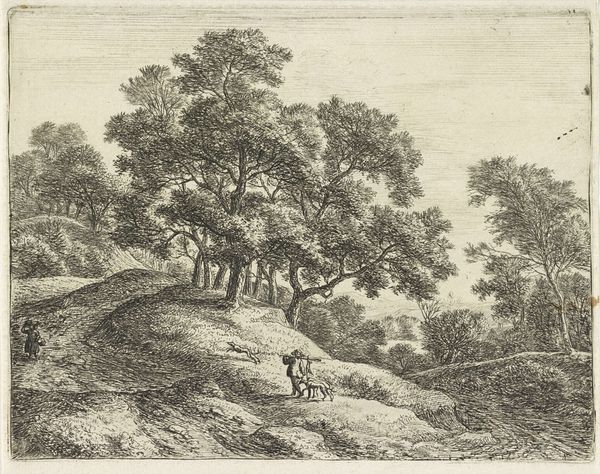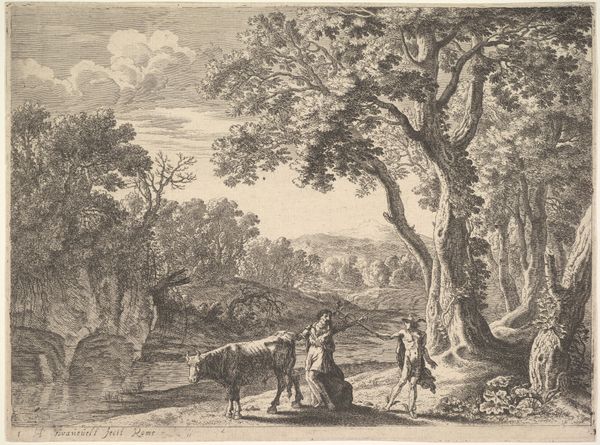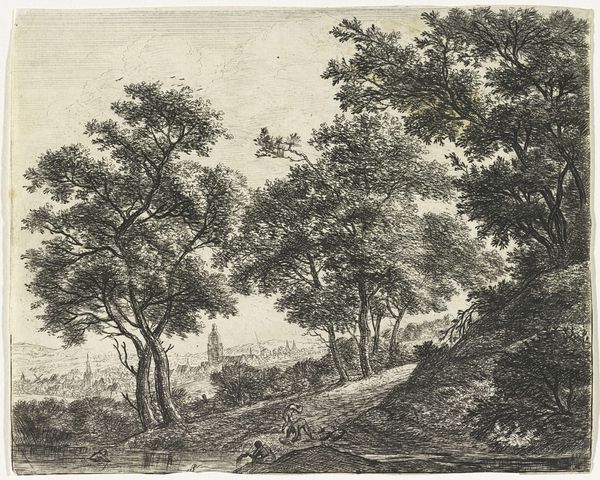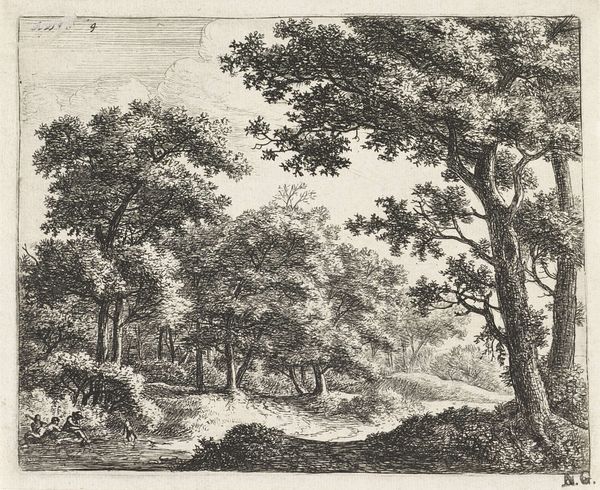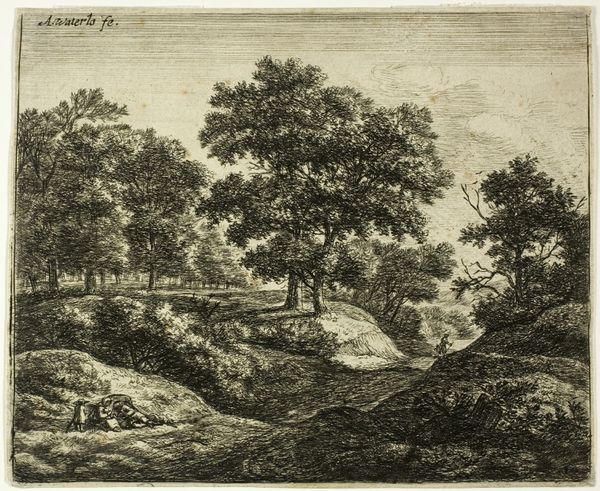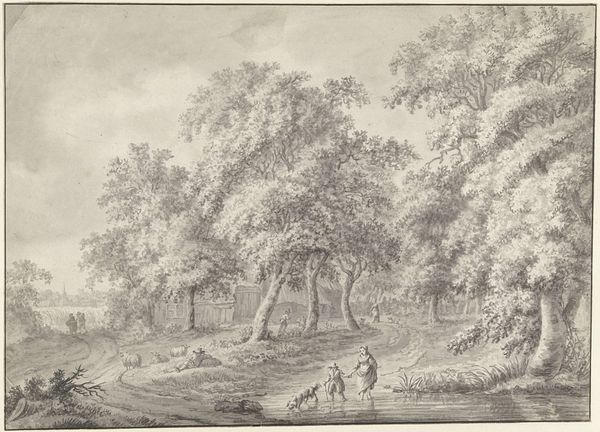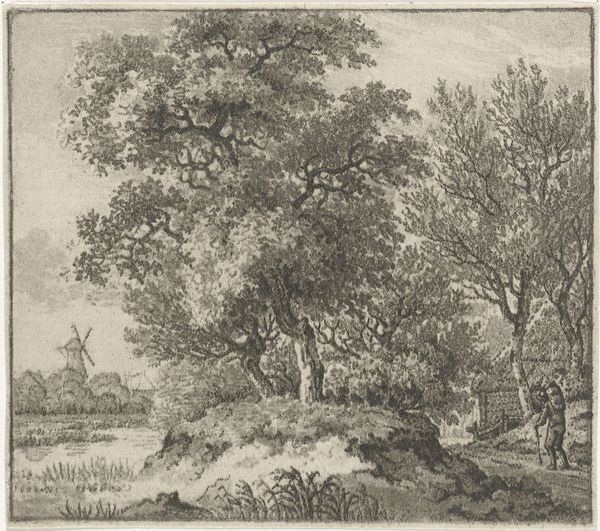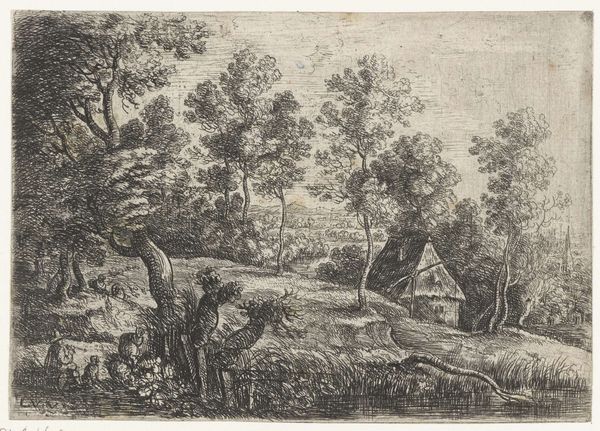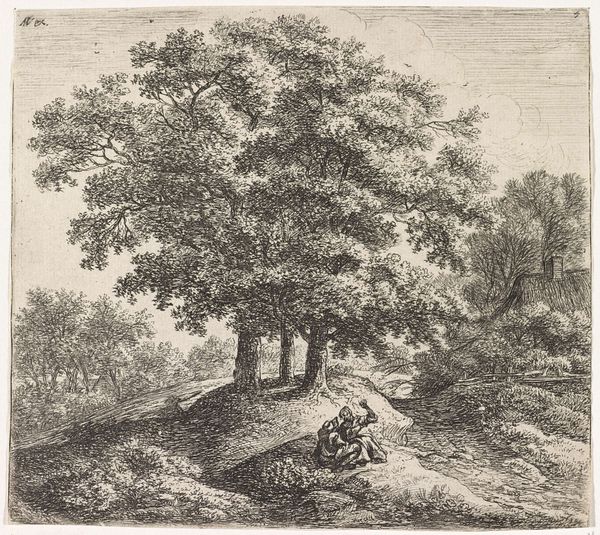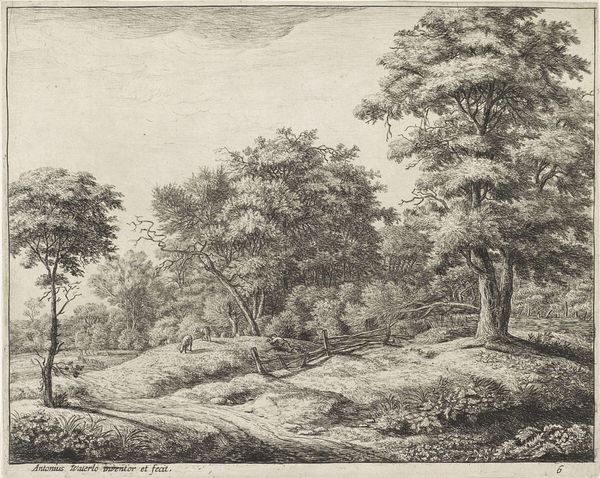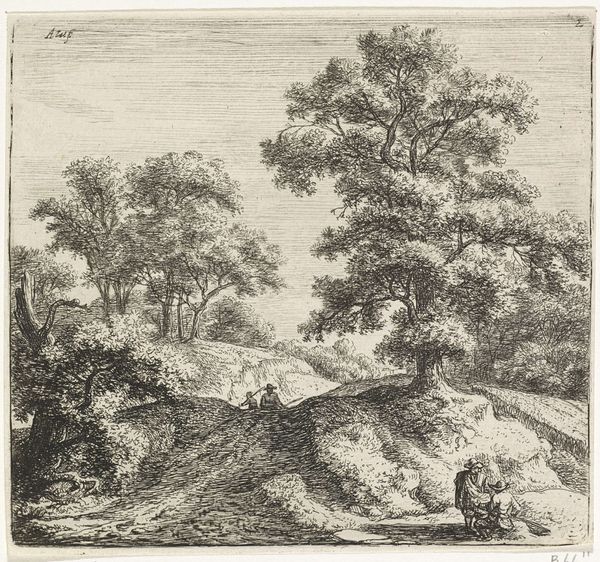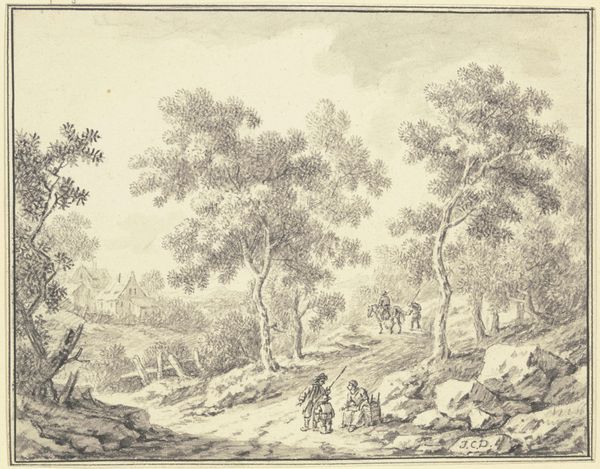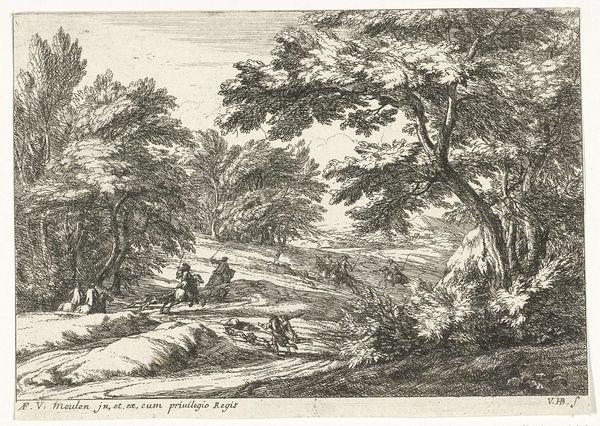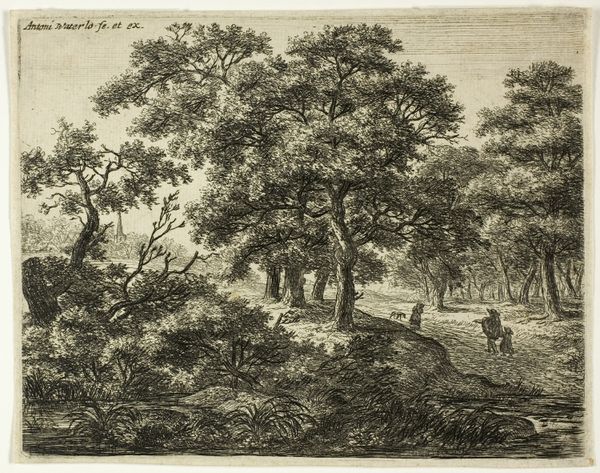
Bosgezicht met rustende wandelaars en een jager Possibly 1630 - 1717
0:00
0:00
anthoniewaterloo
Rijksmuseum
print, etching
#
dutch-golden-age
# print
#
etching
#
dog
#
landscape
#
figuration
#
genre-painting
Dimensions: height 134 mm, width 153 mm
Copyright: Rijks Museum: Open Domain
Editor: This etching, "Forest Landscape with Resting Travelers and a Hunter," by Anthonie Waterloo, possibly from between 1630 and 1717, has such a lovely, textural feel. The cross-hatching creates a kind of dappled light throughout the forest. What stands out to you? Curator: The most immediate thing I see is the means of production, the etched line itself. Think about the social context in which this print would have been made and distributed. It’s reproducible, making images accessible beyond the elite circles that commissioned paintings. The labor involved – the artist meticulously etching the plate – and the potential for mass consumption challenges traditional notions of high art versus craft. Editor: So, it’s not just about what the landscape depicts, but also how the printmaking process democratizes art? Curator: Exactly. Consider the material implications. Copper wasn’t cheap, nor was the paper. Who could afford these prints? What kind of aesthetic value was placed on etchings compared to, say, an oil painting? And how did this reproductive medium affect the way people saw and understood the world around them, especially idealized landscapes like this one? Editor: It's amazing to think about how the very *process* of creating this landscape affected its meaning. It gives new depth to what I initially just saw as a pretty forest scene. Curator: Precisely! By considering the materials, labor, and potential consumption of this print, we move beyond the purely aesthetic and start to understand its broader social and cultural significance. This wasn’t just about depicting a pretty forest; it was about participating in a developing print market and shaping the visual culture of the time. Editor: I hadn’t really considered that the choice of etching itself was a statement. It really makes you rethink what we consider "art." Curator: It does, doesn't it? It reveals how economic and technical factors shaped artistic practices. The rise of printmaking democratized image production. That shift challenges assumptions about what counts as art and who gets access to it.
Comments
No comments
Be the first to comment and join the conversation on the ultimate creative platform.
